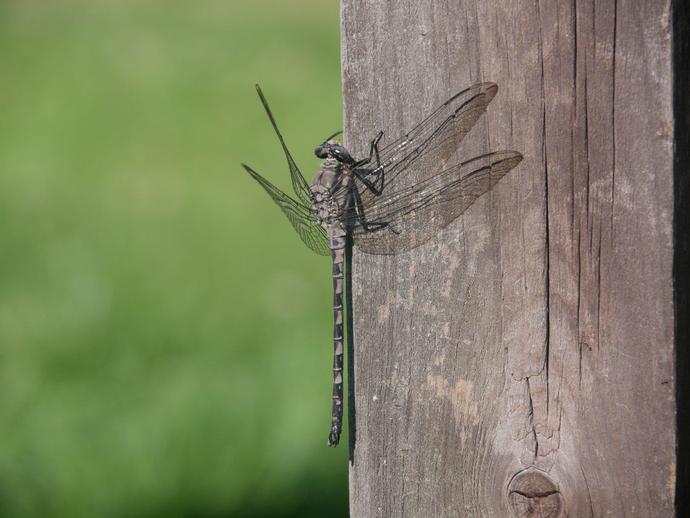July 8, 2020
Yesterday, we looked at a rare butterfly listed on the DCR Atlas of Rare Butterflies, Skippers, Moths, Dragonflies, and Damselflies of Virginia. Today, let's look at another critter from that same atlas: Tachopteryx thoreyi, also known as the gray petaltail!
This dragonfly isn't nearly as rare as the Diana fritillary we looked at yesterday -- it ranges from New York all the way down to Florida and as far west as Texas -- but it's uncommon because of its strict requirements.
Most larval dragonflies spend their lives underwater preying on other insects (and even tadpoles and small fish), but the nymphs of this species of dragonfly require permanent seeps. A seep is a spot where groundwater seeps up from an underground aquifer and creates a puddle or pool. It's sort of like a spring, but a whole lot slower.
The larvae of the gray petaltail live buried in the mud in seeps, which makes it the only eastern dragonfly species that isn't truly aquatic! It belongs to the family Petaluridae, one of the most ancient dragonfly families. These guys have been around for at least 150 million years!
Since we've looked at two different dragonflies over the last couple of weeks, tomorrow we'll look at a similar insect from the same order: the damselfly. #BenInNature
This post brought to you by VMNH Corporate Supporter S & K Office Products, Inc.
ABOUT THIS POST
Social distancing can be difficult, but it presents a great opportunity to become reacquainted with nature. While he is working from home, Administrator of Science Ben Williams is venturing outdoors each day to record a snapshot of the unique sights that can be found in the natural world.
NATURE PHOTO IDENTIFICATIONS
If you discover something in nature that you would like help identifying, be sure to message us right here on Facebook with a picture (please include location and date of picture) and we'll have our experts help you identify it!

 Hours & Admissions
Hours & Admissions Directions
Directions

